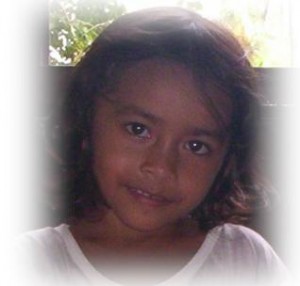 The affectionate, friendly, and happy people of the Western Visayas Region are the Ilonggo. They are the fourth largest ethnolinguistic group in the Philippines, with Hiligaynon as their main language.
The affectionate, friendly, and happy people of the Western Visayas Region are the Ilonggo. They are the fourth largest ethnolinguistic group in the Philippines, with Hiligaynon as their main language.
The term Hiligaynon was derived from Yligueynes that translates to “people of the coast.” Consequently, the language is also called Ilongo or Panay.
With farming and occasionally fishing as their primary source of income, Ilonggos mostly live in small rural barrios. Their heartland lies along both sides of the broken Guimaras Strait separating Panay and Negros. They also inhabit southern Mindoro, Tablas, Romblon, Sibuyan, Guimaras, northwestern Masbate, and some areas in Mindanao. Their major crops consist of rice, corn or maize, sugarcane, and coconuts.
Language, Dialects, and Variants
In precise usage, Ilonggo refers to the ethnolinguistic people, while Hiligaynon or Ilongo is the language they speak. After Cebuano, Hiligaynon is the second-most widely spoken Bisayan language. It is worth noting that historically, Visayan used to refer to people of Panay, though today, it now mostly refers to the Cebuano language.
Hiligaynon is skillfully spoken by approximately 9,300,000 natives. An additional 5,000,000 people also have a substantial degree of proficiency in speaking it.
Several languages in the Philippines have little research on their dialectology, and Hiligaynon is no exception. To date, five of the widely recognized Hiligaynon dialects and variants include the following: Standard or Urban Hiligaynon, or simply called Ilonggo, spoken in Iloilo province and has a variant in Iloilo City; Bacolodnon Hiligaynon, used in Bacolod and has a variant in Metro Bacolod; Negrense Hiligaynon, the dialect of people in Negros Occidental, with three sub-variants in Northern, Central, and Southern Negrense Hiligaynon; Guimaras Hiligaynon, spoken in Guimaras province; and Mindanao Hiligaynon, which is evidently spoken in some areas of Mindanao.
Furthermore, some native speakers consider two more dialects under Hiligaynon. These are the Kinaray-a, also known as Hiniraya or Antiqueño, and Capiznon. However, linguists disagree with this classification and categorize these two as separate Western Bisaya languages.
Religion and Culture
The majority of Ilonggos are Christians, specifically Roman Catholics, while some minorities are Aglipayans, Protestants, and Muslims. Interestingly, to this day, some Christian practices are still mixed with old Pagan Ilonggo traditions. As an example, Ilonggos would bathe their Santo Niño both as a ritual to summon rain and as a means of inviting good luck. This is due largely to Hiligaynon faiths having been eliminated during the Spanish era and hence surviving as Folk Catholicism.
Similar to the majority of ethnolinguistic groups in the country, Ilonggos are Austronesian at their core but still carry with them elements of Negrito, Indic, Hàn Chinese, and Castilian culture. Ilonggos in Mindanao have also incorporated Lumad and Moro traditions into their culture, and vice versa.
Festivities and Cuisine
Like many other groups in the Philippines, the Ilonggos look forward to their annual festivals. These festivals are culturally significant as they focus on showcasing local cultural preservation and sending a clear message against homogenizing Philippine culture. As a bonus, these festivities also improve their local tourism.
There are three well-known Ilonggo festivals. The first is the Dinagyang Festival, whose name is derived from the word dayang meaning “merry-making.” This festival is to venerate the Santo Niño, and most especially is a commemoration of how Panay Island was purchased in the past from the indigenous Ati by 10 fleeing Bornean datus. It is celebrated every fourth Sunday of January in Iloilo City.
The second is the Ilonggo Arts Festival, aiming to showcase a wide variety of art media created by Ilonggos and to emphasize Ilonggo cultural preservation.
The third and last festival is the Iloilo Paraw Regatta FestivaI. With cultural preservation also being its main goal, the festival highlights a week-long competition at sea by Ilonggo fishermen using their traditional sailboats called Paraw.
Another form of recreation for Ilonggos is the sport football, so much so that the Iloilo town of Barotac Nuevo is known to be the football capital of the Philippines and has contributed a lot of football players to the national team over the years.
Ilonggo cuisine has a reputation for being unique and flavorful. Some of the more popular Ilonggo dishes not only locally but also in the whole country include La Paz batchoy, a pork stew composed of pork innards, liver, and heart in a broth with noodles, and is topped with chicharron and garlic; pancit Molo, a wonton soup with dumplings; suman sa Ibos or Ibus, a rice cake wrapped in coconut leaves; and laswa, a vegetable soup with shrimp.
Sources
Ethnic Groups Philippines. Ilonggo
Britannica. Hiligaynon
Wikipedia. (2021, December 10). Hiligaynon language
Wikipedia. (2021, October 18). Hiligaynon people
Casa Baluarte Filipino Recipes. Suman sa Ibos
Lola Kusinera. Laswa Ilonggo

